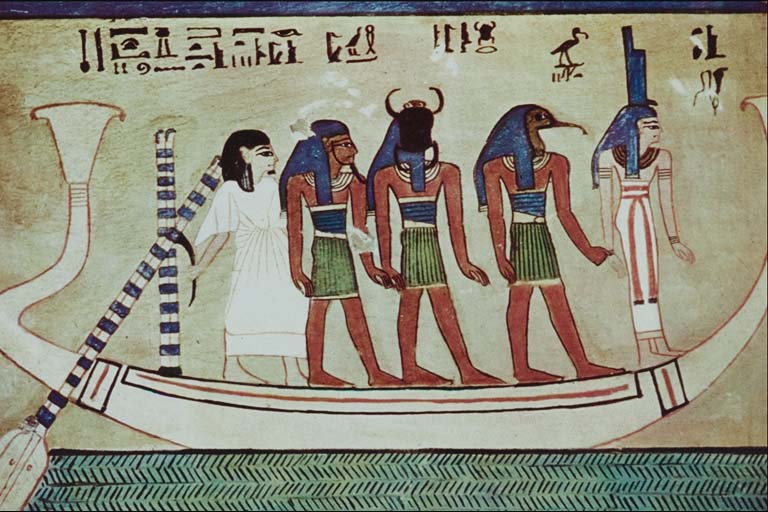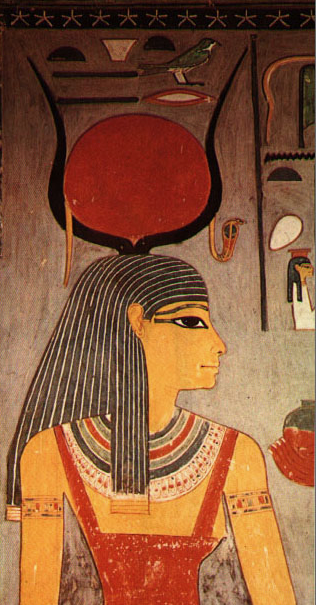Isis, we drink Your sunlight. Radiant One, we breathe You in. Isis, we eat Your magic. Radiant One, take us within, O Isis…
A modern chant celebrating Isis as Goddess of the Sun
As we are in the darkest time of the year here in the Northern Hemisphere, our thoughts turn to the sun and the return of the light, beginning at the winter solstice tomorrow.
And yes, though many people often think first of Isis as a Moon Goddess, Our Lady is full of Fire and Light. In fact, this blog began ten years ago as part of a community summer solstice festival dedicated to Isis, the Radiant Goddess.
(In later periods of Her worship, it’s true, Isis was indeed associated with the moon; in fact, that’s how She entered the Western Esoteric Tradition. You can learn more about about that whole lunar thing here.)
As far back as the Pyramid Texts, Isis was connected with the brightest star in the night sky, Sirius. It was said to be Her ba, Her soul or manifestation. As the influence of Her worship grew, not only in Egypt, but throughout the Mediterranean world, She also became linked with the sun—probably because the sun was such a central symbol to the ancient Egyptians. The sun is the image of one of the most important Gods, Re/Amun-Re, so perhaps it should not be surprising to find that Isis, one of its most important Goddesses, also has strong solar connections. In some places—notably, Her famous temple at Philae—Isis was worshipped specifically as a Sun Goddess. Among Her solar epithets are Female Re (Re-et) and Female Horus (Horet).
Isis’ most common solar manifestation is as the Eye of Re, the Uraeus, the Cobra Goddess Who coils upon the Sun God’s brow to protect Him; and Who fights a constant cosmic battle against His great opponent, Apop (Gr. Apophis). An inscription at Philae calls Isis “Neseret-serpent on the head of Horus-Re, Eye of Re, the Unique Goddess, Uraeus.” A hymn from Philae calls Her “Eye of Re who has no equal in heaven and on earth.” The Eye of Re is His active power. While He maintains His place in the sky, the solar power—the Eye Goddess—goes forth to manifest His Divine will. In this way, Isis and the other Uraeus Goddesses (such as Nephthys and Wadjet) are similar to Shakti, the active, feminine Power related to the God Shiva in some Hindu sects.
Isis is also one of the Deities Who travels with Re in His solar barque as it moves through the Otherworld. Again, She protects Him and helps battle His foes.
Isis is also associated with the Sun God and the sun in several of Her important myths. In the tale of Isis and Re, Isis gains power equal to Re’s by learning His secret name, first by poisoning, then by healing the ailing God. In another, with Her magical Words of Power, Isis stops the Boat of the Sun in the sky in order to receive aid for Her poisoned child, Horus.
But it was at Isis’ influential temple at Philae that She was most clearly worshipped as a Sun Goddess and as the sun itself. A Philae hymn to Isis praises Her saying, “You are the one who rises and dispels darkness, shining when traversing the primeval ocean, the Brilliant One in the celestial waters, traveling in the barque of Re.” An inscription on the first pylon (gate) at Philae says Isis is the “One Who illumines the Two Lands with Her radiance, and fills the earth with gold-dust.” (I love this.)
Like many other Egyptian Deities, Isis was often envisioned with immortal, golden, solar skin. Some of Her sacred images would have been covered with gold, earning Her, like Hathor, the epithets The Gold and the Golden One. A Philae hymn addresses Her, “O Golden One; Re, the possessor of the Two Lands, will never be far from you.” Some scholars believe that the holy of holies at Philae may have once been gold-leafed so that it always appeared filled with golden, solar light.
At Her Philae temple, Isis is first of those in heaven: “Hail to you, Isis, Great of Magic, eldest in the womb of her mother, Nuet, Mighty in Heaven Before Re.” She is the “Sun Goddess in the circuit of the sun disk” and Her radiance outshines even that of Re.
From Her great temple at Philae, Isis’ identity as a Sun Goddess flowed back up the Nile to Her temples at Memphis and Isiopolis in the delta. From there, it entered into the Graeco-Roman culture in the famous aretalogies (self-statements) of Isis. From a papyrus found in Oxyrhynchus, Egypt, we learn that one of Isis’ many names is Name of the Sun and that She is responsible for the rising of the Sun: “Thou [Isis] bringest the sun from rising unto setting, and all the Gods are glad.” In an aretalogy from Kyme, in modern Turkey, Isis says of Herself, “I ordered the course of the sun and the moon.” And later in the same text She says, “I am in the rays of the sun” and “I inspect the courses of the sun.”
Throughout Her worship, Isis has always shown Her life giving, fructifying power in the image of the Sun. She is the Radiant Goddess, the Lady of Sunlight, and with the solstice, She is returning once more.




Happy Blessed Yule Lady IsadoraLAD
You, too!
Thank you for this. I have been feeling Isis energy very strong at this time. It is Summer Solstice here. I have started studying Astrology this last year. I searched in the list of names for Asteroids and found Asteroids for Isis, Osiris and Horus. I entered them into my Astrology chart and it so happens that they are traveling together and are all in very early degrees of Aquarius right now where the great conjunction is happening between Saturn and Jupiter.
I had my own little Ceremony with Isis today. I love her so much. I feel she is helping us all at this time of great change. As we move from Earth Element to Air Element. She is showing us all how to fly. ❤
Wonderful! Thank you for sharing this. Happy summer solstice to you. Our wings will come in handy now!